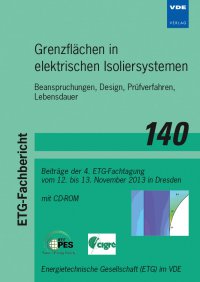Investigations on partial discharges of polymeric insulators in the presence of oscillating water droplets on the surface
Konferenz: Grenzflächen in elektrischen Isoliersystemen - Beiträge der 4. ETG-Fachtagung
12.11.2013 - 13.11.2013 in Dresden, Deutschland
Tagungsband: Grenzflächen in elektrischen Isoliersystemen
Seiten: 6Sprache: EnglischTyp: PDF
Persönliche VDE-Mitglieder erhalten auf diesen Artikel 10% Rabatt
Autoren:
Nazemi, Mohammad Hossein; Hinrichsen, Volker (High Voltage Laboratories, Technische Universität Darmstadt, Germany)
Gjonaj, Erion (Computational Electromagnetics Laboratory (TEMF), Technische Universität Darmstadt, Germany)
Inhalt:
Polymeric insulators are more and more replacing ceramic or glass insulators in transmission systems due to their low weight, resistance to vandalism, high contamination resistance and, most important, hydrophobic surfaces. However, water droplets forming on the hydrophobic surface of polymeric insulators give rise to significant electric field enhancement, especially in close vicinity to the contact line between air, water droplet and insulator surface [1]. Periodical deformation of a water droplet in an AC electric field makes it difficult to find an exact value of an electric field enhancement factor. Several electrostatic simulations have been performed to find an enhancement factor of the electric field due to stationary water droplets [1-4], but as the water droplets are changing their shape, a dynamic simulation tool that takes this effect into account is preferred. A new numerical approach to the dynamic simulation of water droplet oscillation has recently been proposed in [5-6]. For this contribution, at first, a systematic knowledge about typical oscillation modes of a single water droplet on insulator surfaces [7] and their relation to partial discharge inception voltages are investigated. Comparison of these investigated experimental results and those of a newly developed simulation package shows good agreements [6]. Secondly, in order to localize the partial discharges of a single as well as of multiple water droplets on the insulator surface, electric field distribution of single and multiple water droplets under both tangential and normal E-field are simulated and compared with the experimental results obtained with a daylight UV-camera. Partial discharges of different configurations of multi water droplets on an insulator surface are localized and discussed. As an outlook, a simulation model of corona inception at water droplets on insulator surfaces based on streamer mechanism under high voltage electric field stress and under the impact of periodical changes of the droplet shape is discussed.


